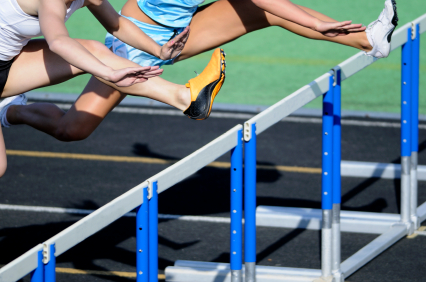Many of today's running shoes feature a heavy cushioned heel, but new research presented at the 2013 Annual Meeting of the American Academy of Orthopaedic Surgeons (AAOS) says that the shoes may alter an adolescent runner's biomechanics in a way that adversely effects performance.

Researchers recruited 12 adolescent competitive athletes from local track teams, and asked them to run on a treadmill at four different speeds in large heel trainers, track flats, and without any shoes (barefoot) while they measured biomechanics - stride length, heel height during posterior swing phase and foot/ground contact - with a motion capture system.
Support barefoot trend?
"Running barefoot or running in less of a running shoe (toe shoes, for example) is a newer trend," said Scott Mullen, MD, an orthopaedic surgeon at The University of Kansas Hospital. "What we were trying to evaluate is whether or not the foot strike would change in an adolescent - who doesn't yet have a permanently established gait - when they changed their shoe or running speed."
What researchers found was that shoe type "dramatically" altered running biomechanics in the adolescent runners:
- When wearing cushioned heel trainers, the athletes landed on their heel 70 percent of the time at all speeds.
- With the track flats, the heel was the first point of contact less than 35 percent of the time; and
- When running barefoot, the heel contacted the ground first less than 30 percent of the time.
"What we found is that simply by changing their footwear, the runners' foot strike would change," said Dr. Mullen. "When they ran in the cushioned heel or an average running shoe ─ even when running a 5-minute mile ─ the athletes landed on their heel first. "Many adolescent runners train in cushioned heels and compete in track spikes, "which may give them less of a (performance) advantage" in competition, said Dr. Mullen.
As a 2010 study found, heel strike running distributes more energy to hips and knees, while running in flat-soled shoes promote a forefoot strike, which may "present a healthier foot strike for runners over a lifetime, possibly resulting in fewer hip and knee problems," said Dr. Mullen. More research is needed to determine whether the altered biomechanics of the heavily heeled cushioned trainer may be detrimental to the adolescent runner who is still developing a running stride.
Source: American Academy of Orthopaedic Surgeons
Posted March 20, 2013








